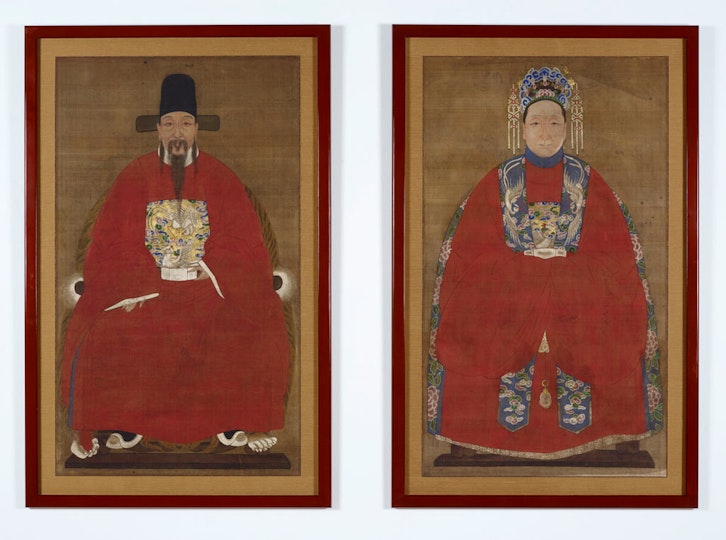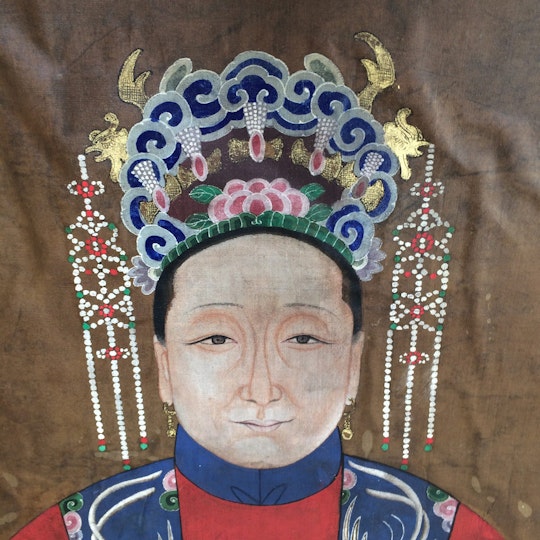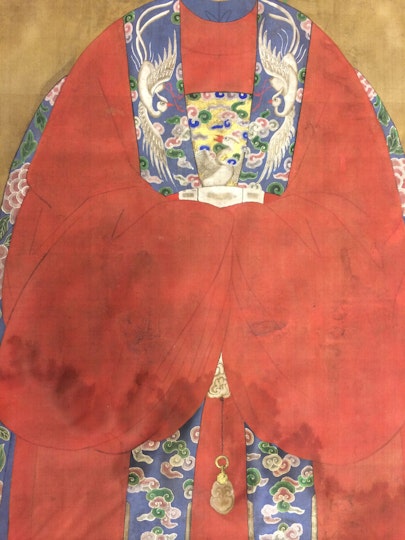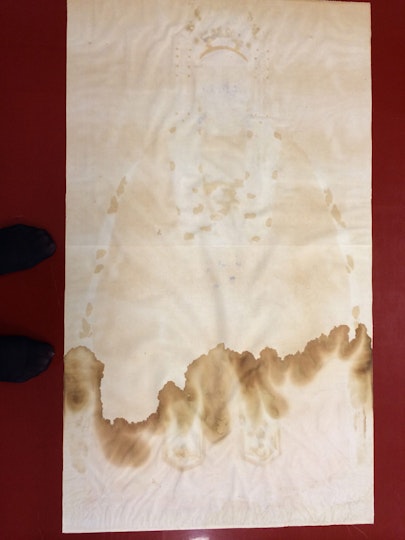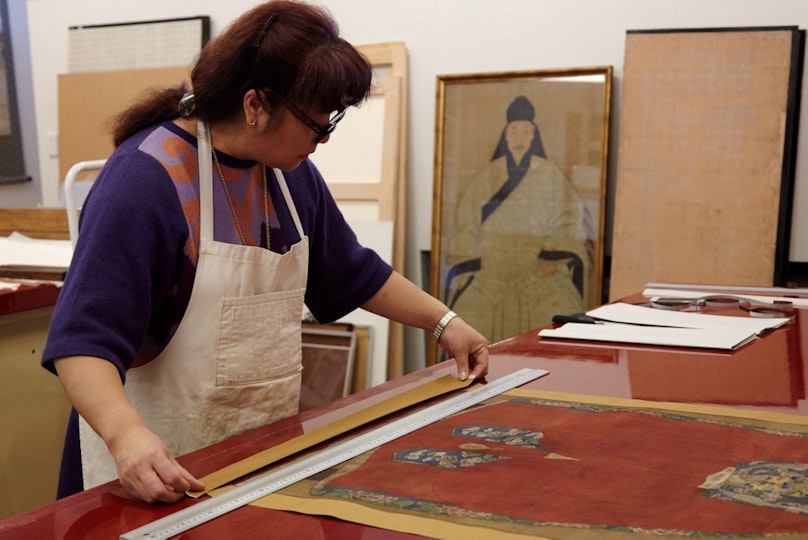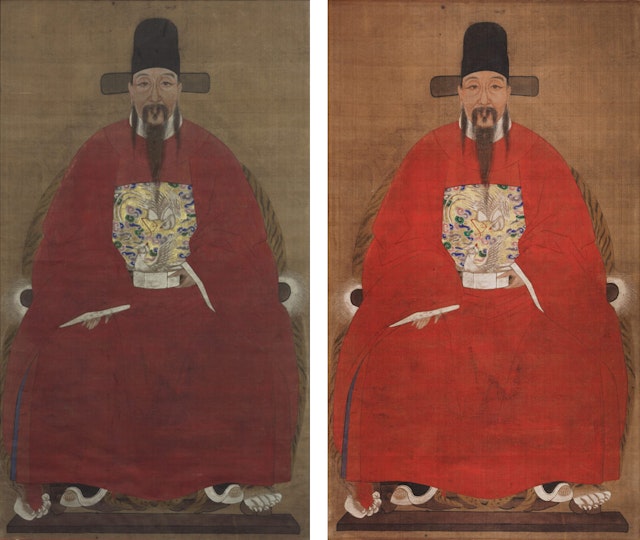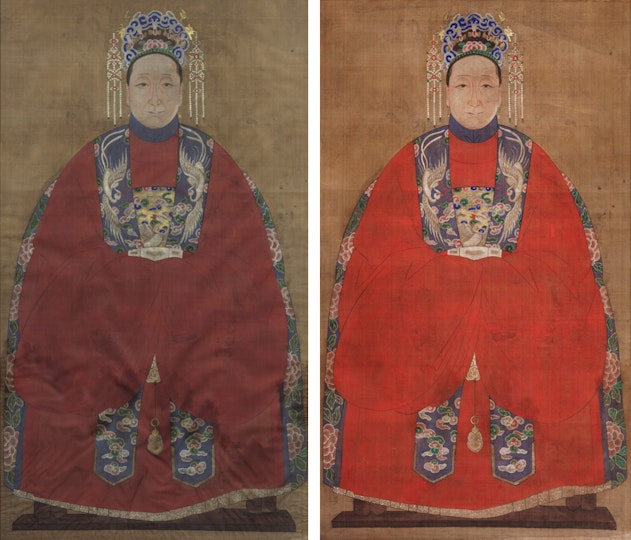Caring for the ancestors
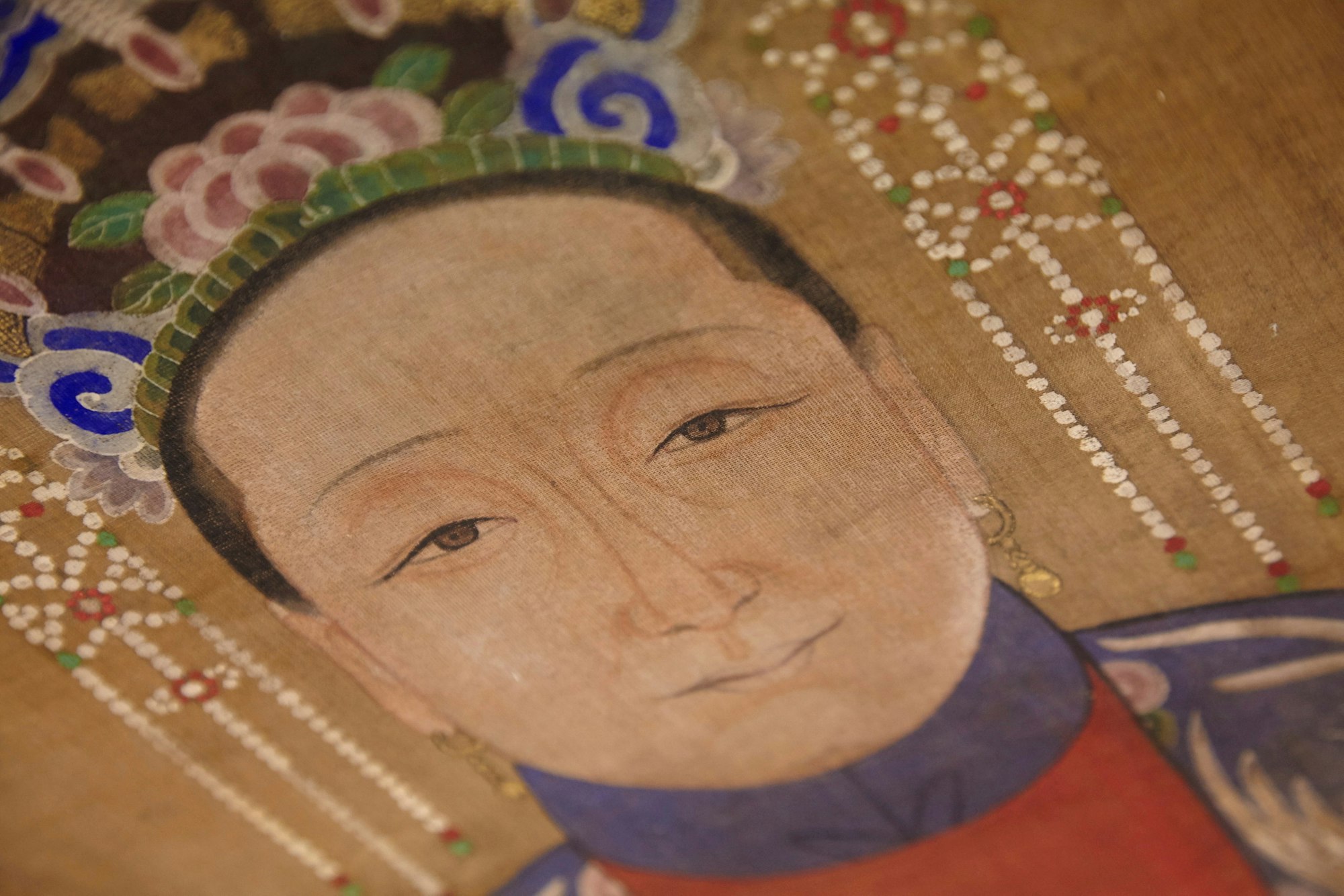
There are times in one’s life when all the skills learnt over years come to be needed, when one is tested by a seriously challenging job.
Lily Yang, the Gallery’s head of Asian art conservation, has been telling me of a recent whole-body testing of her mettle while she pulled together the conservation of an exquisite new addition to Conversations through the Asian collections as part of a recently refreshed display.
The work is a pair of husband and wife funerary portraits created by an unknown artist in China around the 18th century.
Lily explains that paintings of this style on silk have a support lining of paper – called ‘life paper’ in Chinese for the extra life they give the works (don’t you love that?). That means that when the artist paints the mesh of fine silk, the paint seeps in through the weave creating a sort of ghost image underneath. All fine and dandy if the work is in good condition, but when it’s not – this beautiful couple had suffered some nasty water damage – and needs treatment, the conservator is in for a whole lot of pain.
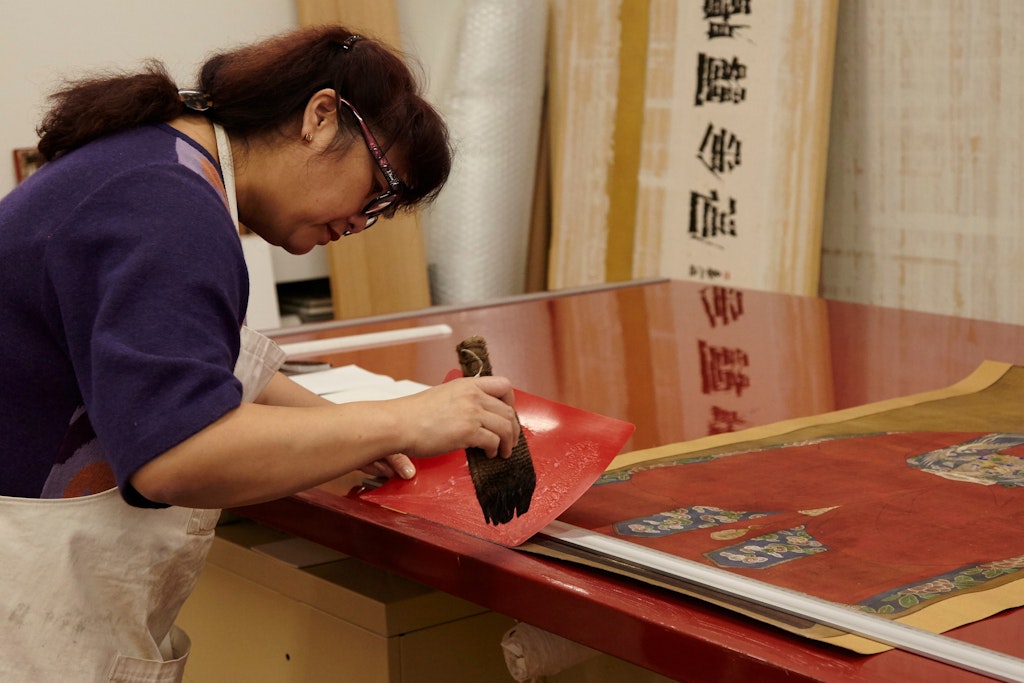
Lily Yang applies a traditional pasting technique to a thin section of the lower edge of the wife portrait
Lily had to separate the silk from the lining paper, wash and flatten them then, wait for it, put them back together again. (This step was bad enough, when the startling red and blue powdery pigments threatened to flow down the plughole unless expert care was taken.) The potential for this ‘re-registration’ process to end up like an Andy Warhol celebrity portrait was very real. She had to lay the silk down, made awkward by the fine layer of new starch paste in between, in exactly the right place or else, to use her words, ‘they’d have two sets of eyes and two sets of lips’! When you look closely at these magnificent portraits, you’ll see each fine moustache hair, so can imagine the way Lily drew on all her energy and her 30 years of conservation experience to fit each silk brushstroke of hair onto its paper double. Once finished, she was shaking with the effort.
Well, it was worth it. And assistant conservator Tom Langlands has made gorgeous new frames in red lacquer to replace the older thinner ones that were not deep enough to fit the spacer needed to avoid further damage to the paintings’ jewel-like surfaces.
It’s rather lovely to think of the skill of artists being matched by the skill of conservators in this way. These are portraits that remember the dead, the ancestors. That their ‘needs’ are still accommodated and they are accorded such respect seems particularly fitting in this case.
To get some idea of Lily’s epic task, take a look through our image gallery.
